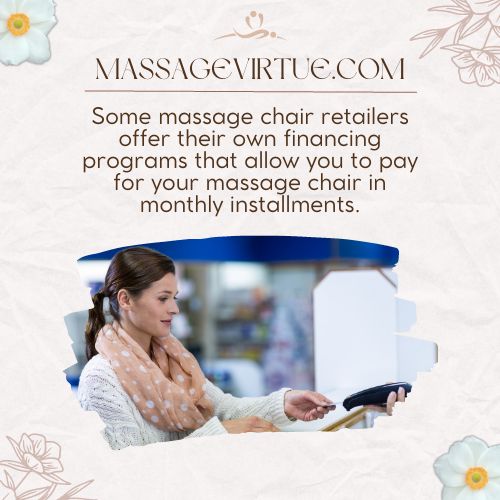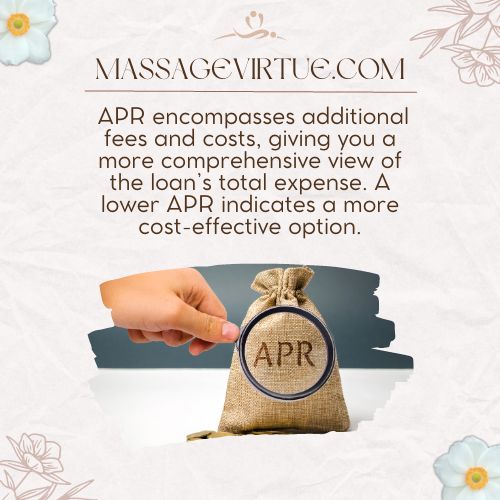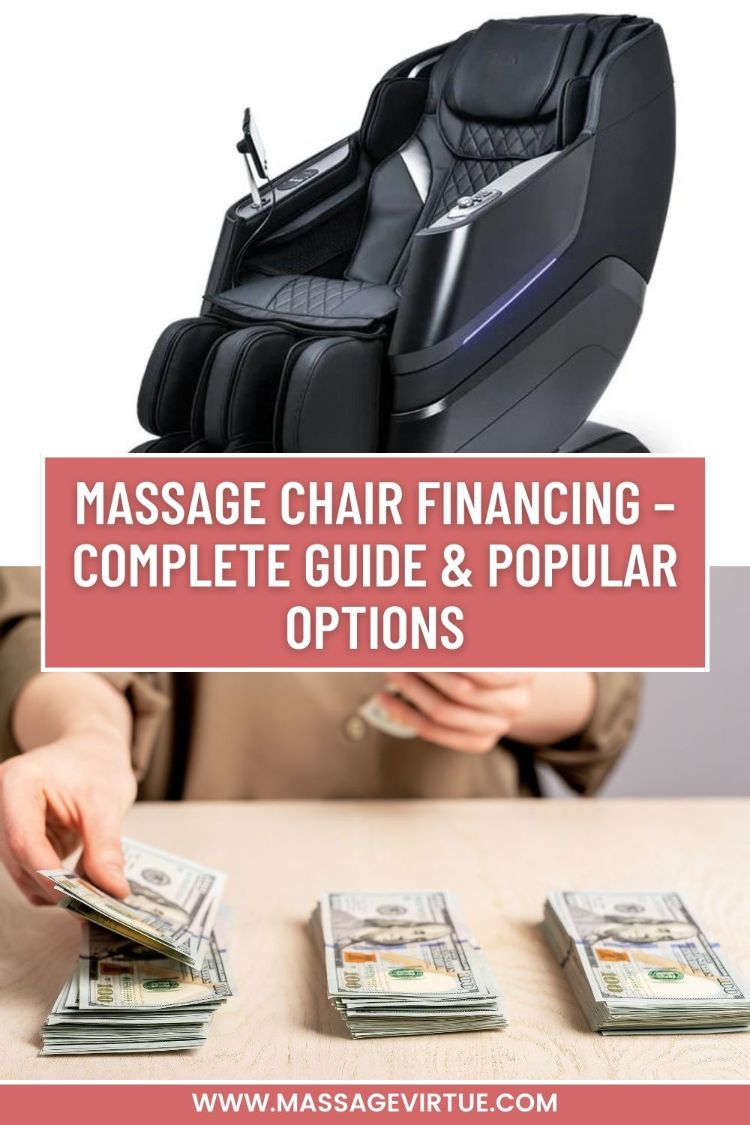Are you looking for a massage chair to relax your body and mind? A massage chair can be a great investment for your health and wellness, but it can also be a big expense.
If you don’t have enough cash to pay for your massage chair upfront, you might be wondering how to finance it.
Fortunately, there are different types of massage chair financing available that can help you get your dream chair without breaking the bank.
In this article, we will explain everything related to financing a massage chair.
Types of Massage Chair Financing
When it comes to financing your massage chair, you have a few options to consider:
1. Financing Through the Massage Chair Retailer
Some massage chair retailers offer their own financing programs that allow you to pay for your massage chair in monthly installments.

These programs are usually provided by third-party financing companies that partner with retailers.
For example, Massage Chair Store offers 0% interest for 48 months on select full-body massage chairs through Affirm, and Easy Massage Chair offers 0% to 29.99% APR for 18, 24, or 36 months through Affirm.
2. Financing Through a Credit Card
Using a credit card to finance your massage chair is another option.
Depending on your credit limit and card terms, you might benefit from promotional interest rates or rewards.
However, be cautious about high interest rates if you’re unable to pay off the balance quickly.
3. Financing Through a Personal Loan
A personal loan is a type of loan that you can use for any purpose, including buying a massage chair.

You can apply for a personal loan from a bank, a credit union, an online lender, or a peer-to-peer platform.
You will have to repay the loan in fixed monthly payments over a certain period, usually from 12 to 60 months.
How to Qualify for Massage Chair Financing?
To qualify for massage chair financing, you will need to meet some basic requirements that vary depending on the type of financing you choose.
Generally, you will need to:
- Be at least 18 years old
- Have a valid ID and a social security number
- Have a bank account or a debit card
- Have a steady source of income
- Have a good credit history or a co-signer
Some financing options may also require you to provide additional information such as your address, phone number, email address, and proof of income.
Pros and Cons of Each Type of Financing
Each type of financing has its advantages and disadvantages that you should consider before making a decision. Here are some of the pros and cons of each option:
| Type of Financing | Pros | Cons |
| Retailer Financing | The easy application process, No/low interest rates, Flexible terms, and No credit score impact | Limited to specific retailers/products, Potential down payment, Hidden fees, Strict eligibility |
| Credit Card Financing | Widely accepted, Rewards & promotions, Early payoff possible | High interest if not paid in full, Affects credit score, Late fees possible, Impulse spending risk |
| Personal Loan Financing | Shop for the best rates/terms, Versatile use, and Larger loan amounts possible | Higher interest rates, Origination/prepayment fees, Longer approval process, and Good credit/income needed |
Comparing Financing Offers
Before you dive into any financing arrangement, it’s crucial to compare the available offers. Take the time to assess the following key factors:
1. Interest Rate: This figure represents the percentage of your loan amount that you’ll pay as interest over the loan’s duration. Less duration for the repayment of a loan means less interest rate.
2. APR (Annual Percentage Rate): Beyond the interest rate, the APR encompasses additional fees and costs.

This gives you a more comprehensive view of the loan’s total expense. A lower APR indicates a more cost-effective option.
3. Term Length: The loan term refers to the period in which you’ll repay the loan. Choosing a shorter term may lead to higher monthly payments, but it also means less total interest paid over time.
4. Monthly Payment: This is the amount you’ll be required to pay each month. While a lower monthly payment may seem appealing, keep in mind that it can extend the loan’s life and increase overall costs.
5. Fees: Additional costs, like origination fees or penalties, can significantly impact the loan’s affordability. Opt for offers with fewer fees to ensure a smoother borrowing experience.
Maximizing Your Massage Chair Financing
Here’s how you can make the most of your massage chair financing:
- Budgeting: Calculate your budget to ensure you can comfortably manage the monthly payments.
- Early Repayment: If your financing allows, consider paying off your balance early to save on interest.
- Read the Fine Print: Thoroughly read and understand the terms and conditions before signing any agreement.
Conclusion
Owning a massage chair is no longer a distant dream.
With various financing options at your fingertips, you can indulge in relaxation without straining your finances.
You can choose from financing through the retailer, financing through a credit card, or financing through a personal loan.
Each option has its pros and cons that you should weigh carefully before making a decision.
FAQs
How Much Should You Spend on a Massage Chair?
Setting a budget for a massage chair involves balancing your preferences and financial capacity.
Entry-level models begin at approximately $500, while more advanced and feature-rich options can range between $2,000 to over $10,000.
Are Massage Chairs a Good Investment?
Massage chairs can be a wise investment, offering the convenience of on-demand massages in your home.
By potentially reducing the need for frequent visits to spas or massage therapists, they may lead to long-term cost savings.
Why Are Massage Chairs So Expensive?
The higher cost of massage chairs is typically justified by the advanced technology and engineering they incorporate.
These chairs often include intricate mechanisms, such as motors, rollers, and airbags, designed to replicate various massage techniques.
Premium materials, ergonomic design, and research and development efforts contribute to their price.
How Many Years Does a Massage Chair Last?
Generally, a well-maintained massage chair can last for 5-20 years.
Adhering to usage guidelines, performing regular maintenance, and addressing any issues promptly can help extend the chair’s longevity.


